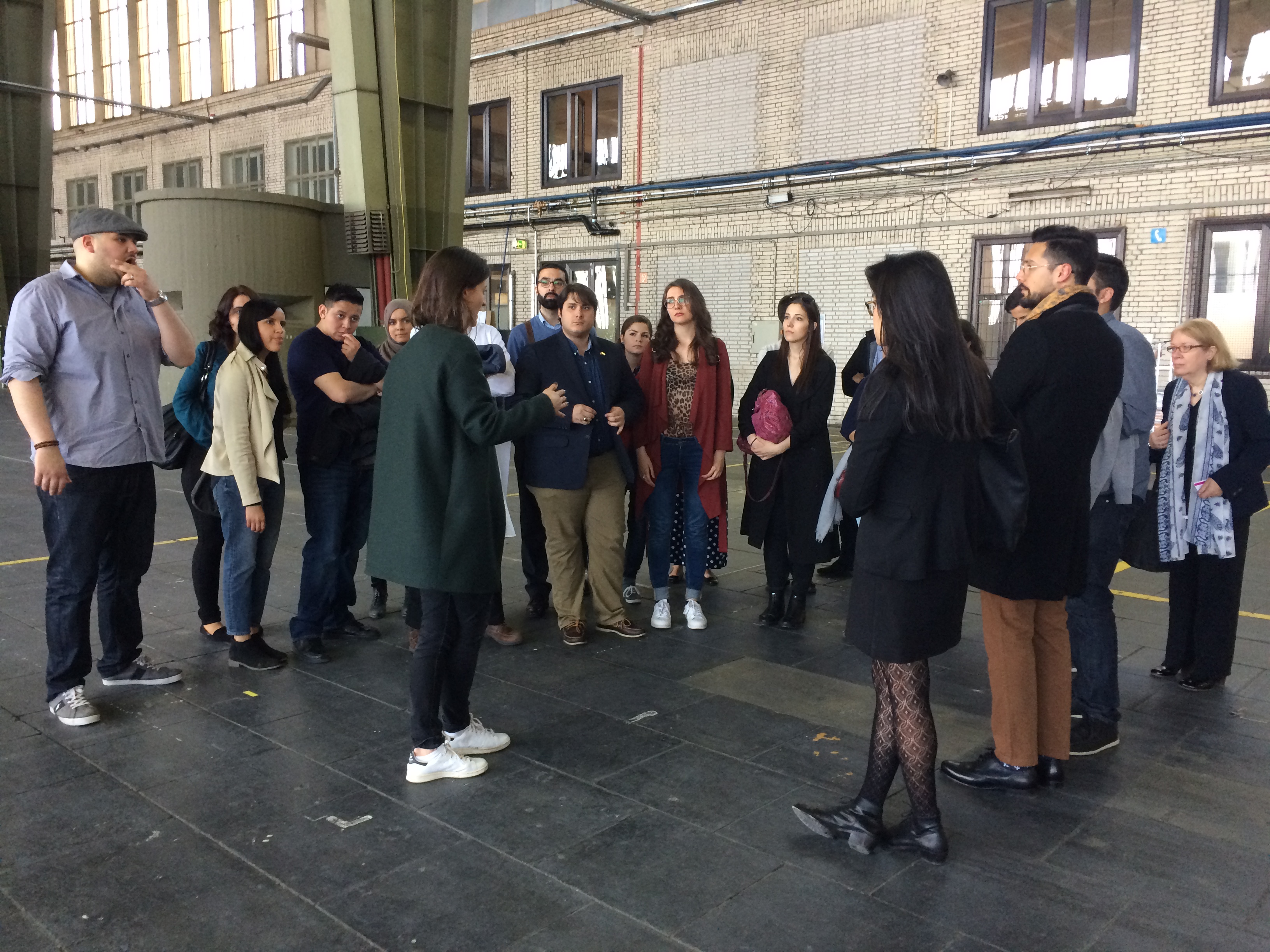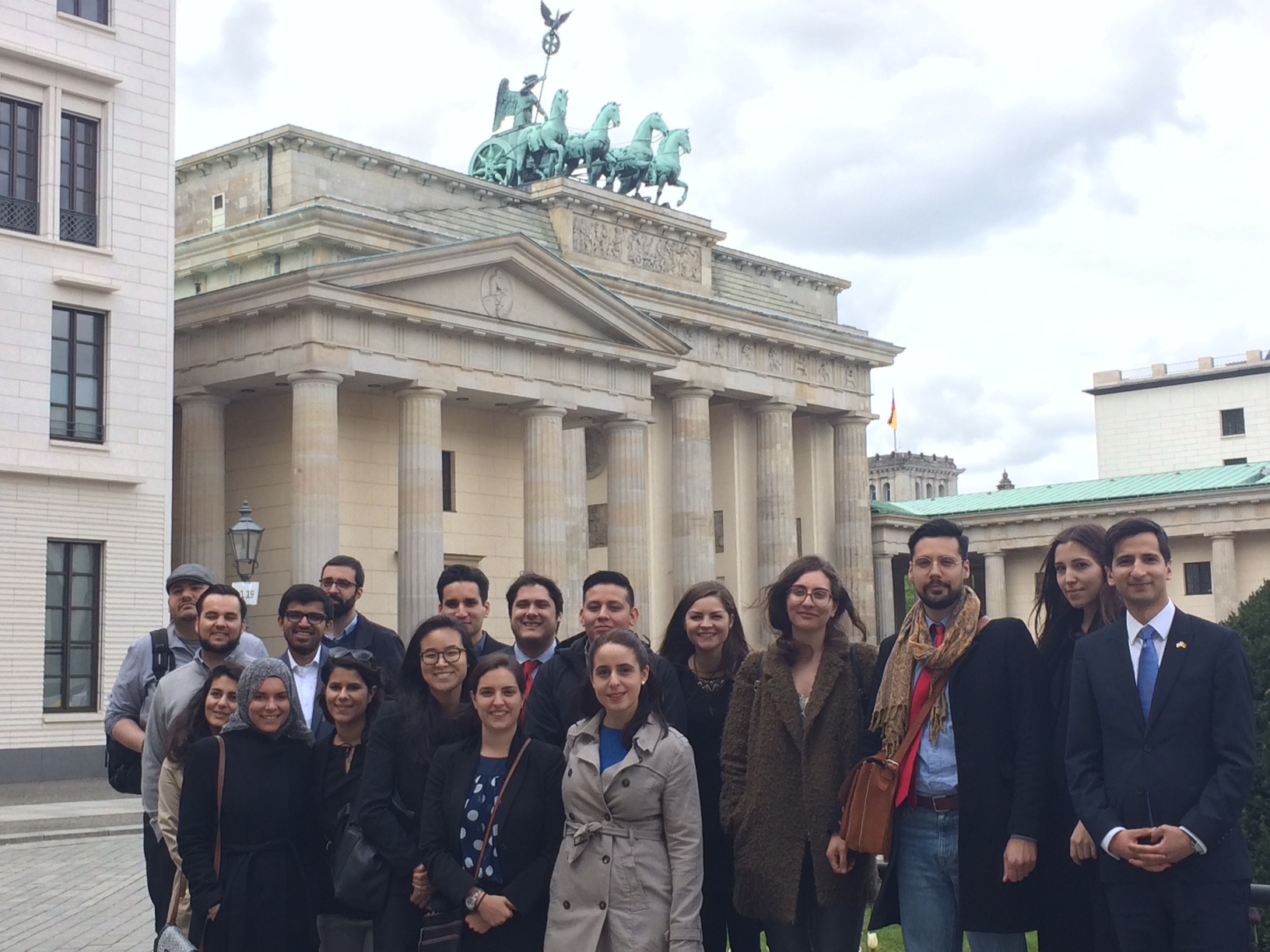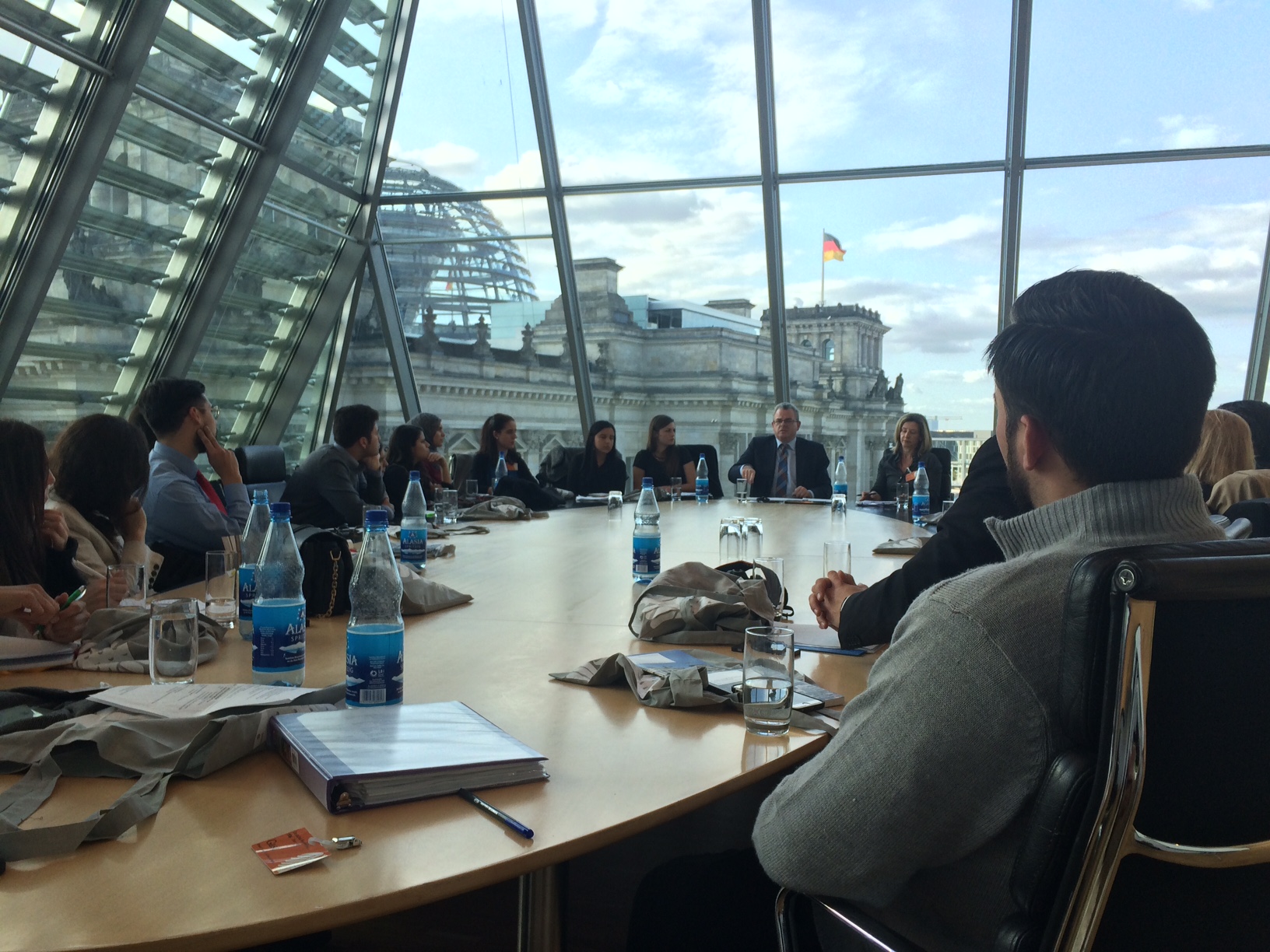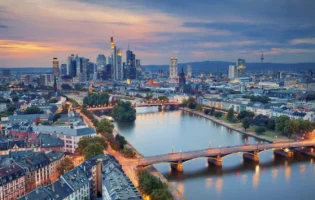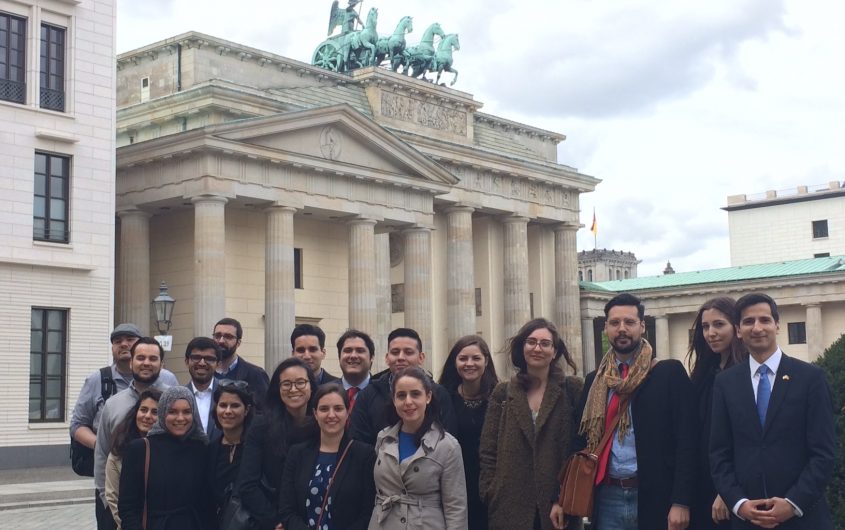
AICGS
Immigration, Integration, and a New Transatlantic Generation
The event was part of the continuation of the new AGI program, which began in October 2015 in Washington, DC. The first panel included Mekonnen Mesghena, Department Head Migration and Diversity, Heinrich Böll Stiftung, and Christina Krause, Coordinator for Refugees and Migration, Konrad Adenauer Stiftung. The second panel was led by Ulrich Weinbrenner, Head of the Department for Integration, Federal Ministry of the Interior, and Serhat Karakayali, Member of the Department “Foundations of Migration and Integration Research,” Berlin Institute for Integration and Migration Research. The third panel discussion was conducted by Cordula Simon of the City Council of Neukölln, Berlin, and the fourth panel featured Katharina Dermühl of Migration Hub.
Panel 1: Immigration and Politics
After the panelists gave a brief overview of the history of immigration and integration in Germany, the discussion centered on the current refugee situation in Germany and Europe and the resulting politics of identity. The newly arrived refugees are faced with a different situation than immigrants in the past. The paradox of the European Union (EU) is its open borders, freedom and justice system and the interest in maintaining its sovereignty, security, and a functioning labor market. Germany with its open border policy in favor of the refugees has stepped outside of the general EU policies. National politics collide with EU politics. It is also important to realize that different countries have different resources and capacities. Studies have been conducted to monetize the effect refugees will have on Germany. The per capita costs to accommodate one million refugees is negligible. An aging Germany can benefit from immigration but the current refugee influx will not make a difference in the population decline. The mentality in Germany, however, has somewhat changed from being opposed to being an immigration country to proclaiming “Wir schaffen das!”
It was noted that true integration and the Germans’ welcoming efforts are two different things. Germany differs from the United States when it comes to having a national identity; different notions of identity exist. The integration law (Zuwanderungsgesetz) is an extension of the citizenship law in Germany, which is based on blood relations (ius sanguinis), not place of birth (ius soli) like in the United States or France, which nevertheless appears broken as an immigration country. Integration is a process in both countries.
The content and idea of integration classes in Germany were discussed: should they demonstrate differences of societies or should they aim to empower those seeking refuge in Germany? There are certain fears that German society harbors toward refugees, including the fear of Islam. Muslim religious education is increasing in Germany. It was noted that the flexible workforce education system in Germany will benefit refugees and citizens alike. Currently, the government’s focus is on the labor market and pensions, but the government could do more with education politics and focus on the next generation of immigrants who will live almost their entire lives in Germany.
The government takes the issue of integration seriously. One example is the Sachverständigenrat für Immigration und Integration, which was recently created. Ultimately, the recent increase in migration to Germany, both from Europeans within the Schengen Zone looking for better economic opportunities and from refugees fleeing conflict and poor living situations, as well as the debate surrounding the new integration law have forced Germans to confront perceptions of their own identity. Germany must find ways to come to terms with itself as a country of immigrants and bridge structural gaps to create a more inclusive society.
Panel 2: The Challenges and Opportunities in Immigration and Integration
The efforts and policies of the interior ministry regarding integration were outlined and discussed. A special unit is responsible for social cohesion and integration and puts stronger effort on the integration of newcomers. Several units deal with issues of Muslim religion, demography, and Muslim representation in the Armed Forces. Religion, political education, asylum situation, language, and integration courses are part of the work. The government delineates which individuals arriving in Germany will be able to benefit from the integration measures. Migrants from some countries, like Syria and Eritrea, benefit from an accelerated process; others do not, like Afghanistan, Algeria, Morocco. The efforts focus on a variety of issues, including social benefits, labor market preparation, housing distribution (Wohnsitzzuweisung) to the federal states.
A discussion about terminology followed, especially concerning “integration” and “migrant.” The term integration is as such problematic, a technical term that has traditionally not been used to describe individual behavior. In Germany, it has been in use since 2000 in relation to foreigners and Muslims. Germany has seen a discussion of religious and personal identity since the 1990s. Germans tend to drastically overestimate the number of Muslims living in Germany. The word migrant does not apply to individuals from all nations. Individuals from Sweden, Switzerland, or the United Kingdom are not referred to as migrants but as expatriates. The use of these terms points to identity issues in Germany and the view the country has of different nations and people. It can be observed that the attitude of Germans has changed towards immigrants: when the majority of those who showed compassion, empathy, and support for refugees used to be those politically left of center, they now represent a broad range of political leanings. Contact with refugees changes attitudes and has a positive impact on the German population and should be supported broadly. It was noted that social cohesion is a utopian state that cannot be fulfilled completely. The Scandinavian countries come closest to an ideal version; however, this has been challenged recently due to their problems to integrate and accept migrants. Acceptance of diversity and tolerance are key aspects of social cohesion. Programs sponsored by the government’s interior ministry are in place to combat racism but the results are not convincing. The labor market plays an important role and more needs to be done.
Panel 3: Integration and Communities
Berlin has a high number of very diverse communities and the district of Neukölln does not proclaim one message about what it means to be German. This is because Neukölln is the most diverse neighborhood in Berlin, with 35,000 people from over 150 countries. However, the district government works with an imbalance among their staff due to a hiring freeze that had been in place for twenty years, resulting in most staffers being white, ethnic Germans with a specific generational perspective on immigration and diversity. Going forward, the city employees will be more representative of their citizens concerning age, gender and ethnic background. The city has worked with non-governmental organizations (NGOs) to bridge the existing gap, however, and several programs are in place, e.g., Stadtmütter (City Mothers), who provide language and bicultural assistance to parents and children in local schools, or the concept of Integrationslotse (integration pilot), who work in the community to assist people of different backgrounds. Migrants or refugees/newcomers are often wary of bureaucracy and authority. It is considered a success when a Roma family calls the police to file a complaint about an issue, because it means that not only does the family know their rights, but they also trust the system to give them solutions. Because of this wariness, Neukölln works with NGOs and community groups to build trust and foster integration between groups. Faith groups are especially important for fostering dialogue between different groups. Interreligiöser Treffpunkt is a Jewish, Protestant, and Muslim group where congregations can meet each other, reach out to each other, and have discussions about religion and inclusivity at a person-to-person level. An ethnic hierarchy exists, where newcomers start at the bottom. Integration efforts include sanctions like withholding child allowances if the child is not enrolled in school. The graduation rate among immigrants is very low in Neukölln and the city is trying to improve the situation.
Panel 4: Immigration and Society
The influx of refugees in the summer of 2015 occasioned a major challenge for German bureaucracy in providing support for new migrants, but it also unleashed the potential of citizen volunteers looking to provide solutions to the “refugee crisis.” Every week, people across Germany, Europe, and the Middle East are creating new initiatives and technologies to provide support to refugees; however, these initiatives were not working with one another to exchange ideas and learn about what initiatives are working in different sectors to support refugees in Germany. Migration Hub was created as a way for initiatives, innovators, and volunteers to come together in a communal working space to exchange ideas, network, and provide services to refugees.
While innovators’ and volunteers’ enthusiasm is mostly positive, their attitudes come with their own sets of challenges. Many initiatives are often created just for the sake of innovating or because there is a perceived need, but often groups do not work with actual refugees to discuss their real needs. Groups also try to create new social networking platforms exclusively for refugees when traditional networks such as Facebook and Twitter already provide the utility that refugees need when communicating with their networks. If a group is not going to directly engage with refugees and include them in developing initiatives, the initiatives simply have no future and crowd an already crowded space. Despite these challenges, Migration Hub has brought together groups of many people working on many issues that refugees face, for example, how to formally apply for asylum, obtain housing, enroll in education, become employed, and learn about German bureaucratic and legal systems. Migration Hub is currently working in Europe and slowly expanding to the Middle East and North Africa, but sees an opportunity to grow in other areas of the world that are experiencing migration.



